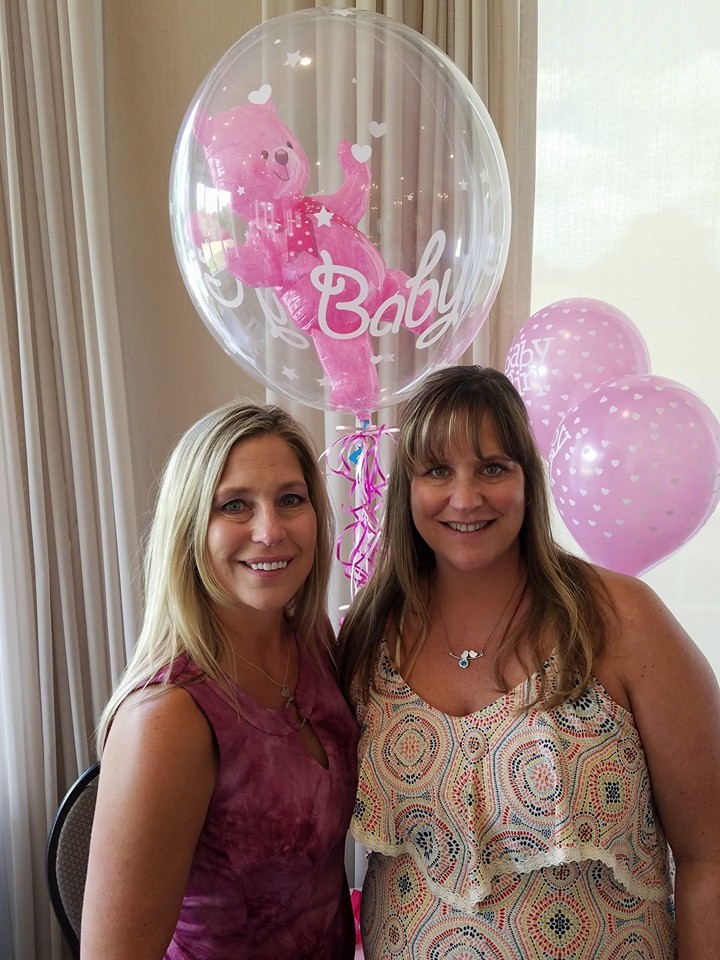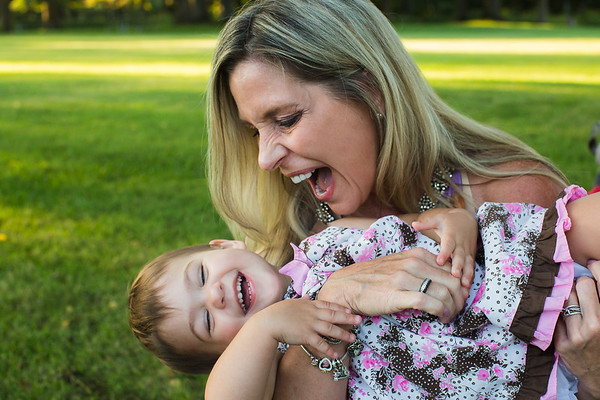Even though my mom was 44 years old and had already gone through pregnancy three times, she decided to carry my aunt’s baby.
Wanting something and knowing you can’t physically attain it yourself is challenging, especially when that something is your own child. My aunt and uncle experienced this firsthand.
They tried for seven years to get pregnant before telling anyone about their struggles, keeping the mentally exhausting and heartbreaking experience from their family members. But after eight years of failed attempts, 10 unsuccessful in vitro fertilization cycles, two miscarriages, and a polyp on my aunt’s uterine lining, it became necessary to tell family. Their options for having a biological baby had been limited to one: surrogacy.
My aunt and uncle tried for one more year to conceive on their own. They couldn’t see a fertility specialist because they didn’t have insurance coverage at the time. It wasn’t until my aunt was 42 years old that they acquired coverage for fertility.
“At that point, I didn’t know if I could use my own eggs because I was so old,” said my aunt, Dianna Dobrilla.
 She turned to Dr. Laurence Jacobs for help, a reproductive endocrinologist since the mid 1980s and a physician of Fertility Centers of Illinois. Based on statistics from his practice, my aunt had less than a 30 percent chance of success.
She turned to Dr. Laurence Jacobs for help, a reproductive endocrinologist since the mid 1980s and a physician of Fertility Centers of Illinois. Based on statistics from his practice, my aunt had less than a 30 percent chance of success.
“Miraculously, I had a lot of good eggs left,” Dianna said. “So I was able to have my own child through surrogacy.”
Couples who struggle with infertility sometimes find surrogacy more comforting than adoption, as it grants them more control over the development of their child. My aunt and uncle wanted to make sure their baby would be taken care of as well as possible.
Surrogacy is a journey that is typically completed in one of two ways: gestational or traditional. Gestational surrogacy—the process used in my cousin’s birth—depends on in vitro fertilization. During this procedure, the genetic mother’s egg is fertilized by the father’s sperm in a laboratory dish before being transferred into the surrogate’s uterus. Despite the embryo’s development in the surrogate, there is no genetic connection between the baby and the woman carrying the fetus. In traditional surrogacy, however, artificial insemination is used to fertilize the surrogate’s egg. In this case, the surrogate is the genetic mother.
In addition to the medical procedures and agreements the involved participants take part in, surrogacy also requires emotional, physical, and mental exhaustion. It’s a process dependent on collaboration in growing a new life, and because of this, my aunt and uncle discussed many possible surrogates before making their decision.
Their minds spun with questions. Who could they trust with their baby’s life? How could they know this person would be willing to put in the time and effort surrogacy requires? The answer for my aunt was simple: her sister.
My mother and my aunt are best friends and have been since they were little.
“She would do anything for me,” Dianna says. “I wouldn’t have anybody else. That’s too important of a thing, to have someone else carrying a kid. If I couldn’t have somebody that I knew I could trust, I wouldn’t do it.”
I was eating my Jungle Safari soup when my mom, Suzanne, agreed to carry my aunt’s baby as a surrogate. We were in Florida, sitting around a wooden table built to look like a tree trunk at Rainforest Café. My soup spilled over the edge of the bowl. I was scared. I didn’t want my mom to do it, not because I didn’t want my aunt and uncle to have their own family, but because my mom was 44 years old.
Pregnancy at 44 comes with many risks. Northwestern Medicine reports surrogates face possibilities of high blood pressure, premature labor, gestational diabetes, and uterine prolapse, in which the muscles of the uterus weaken and are no longer able to safely support the baby. The uterus then slips into the vagina and causes health problems for both the surrogate and the baby.
Later pregnancies also have the possibility of being a threat to the baby’s life. Pregnant women over age 40 face higher risks of miscarriages and stillbirths. In addition, Mayo Clinic states that babies are more likely to be premature, have low birth weights, require C-sections, and develop chromosome abnormalities such as Down syndrome.
Even my mother’s doctor didn’t want to write his letter of approval, which would give my mother and Dr. Jacobs permission to go forward with the surrogacy process.
My mom was 38 and high risk when she had my youngest sister. Now, at 44, the risk was greater.
“My biggest concern was that I have three kids that I need to be here to take care of,” Suzanne says. “You think about what could possibly happen, and it’s scary thinking that you could try to carry a baby for somebody else, but then something can happen to you, and you may not be here to raise your own kids.”
But after almost losing her second child to drowning and brain damage in 2015, my mother realized how important it was to hold the title of “mom.” She wanted her sister to experience something that special and important.
To be a surrogate in the state of Illinois, The Illinois General Assembly states that a gestational surrogate has to have had their own child before being able to carry a baby for someone else. Doctors refer to the potential surrogate’s past pregnancies to determine whether she is healthy enough to carry another child. If any problems did occur in previous pregnancies, it is unlikely that the potential surrogate would be eligible to carry the baby. Finally, most surrogates are typically between the ages of 21 and 43 and must have a body mass index of 32 or less. Mental health is also considered: It’s important that the surrogate is mentally strong enough to carry and give birth to a baby that she will not be able to raise herself. My mother fit almost all of the criteria.
After careful consideration of the physical and mental health of my mom, aunt, and uncle, doctors gave permission to move on with the process. It was January 8, 2016, when the embryo was implanted. My mom and aunt decided to wait three days to take the pregnancy test. They were in their offices together, separated by just one wall, when they decided it was time to see if the egg took.
The pregnancy test came back positive.
The pregnancy required a lot of work. My mom took her shots every night, checked in with her doctor frequently—over the phone and in person—and took the proper medication to keep both herself and the baby safe.
For my aunt and uncle, between the doctors’ appointments, meetings with my mom, and pregnancy celebrations, their schedule was packed until the day the baby was due. I can’t remember a time when I didn’t see them with a smile on their faces.
But the excitement didn’t come without stress and anxiety. They constantly worried not only about the health of their baby, but about my mom, as well. If anything happened to her, it would partially be their fault.
For me, the experience was scary. I hated almost every second of it. I was excited to have another baby in the family, and I was thrilled for my aunt and uncle, but not a day went by when I didn’t panic about my mother and her health. She was always tired. About three months into her pregnancy, we were walking from Nordstrom Rack to Old Navy. The stores were only separated by a HomeGoods, and my mom couldn’t make it.
It had been six years since I last saw my mother pregnant, and I never thought she would be pregnant again. It took me a while to get used to, especially when instead of shopping at fun stores in the mall, we walked through maternity stores. And to make the situation even weirder, she wasn’t carrying one of my siblings: She was carrying my cousin. I was 16 at the time, so I understood the surrogacy process, but it was still hard for me to experience the entire pregnancy and have my mom come home from the hospital without a baby to take care of.
But I have never seen my aunt and uncle more excited in my life.
Yes, they had one of those cheesy gender reveals. The whole family came dressed in either pink or blue in support of the gender they wished the baby to be. After looking for the most exciting way to learn if she was going to have a little boy or girl, my aunt decided on filling a baseball with colorful powder and pitching it to my uncle, who wacked it with a baseball bat.
1… 2… 3… miss. Everyone gasped when the ball fell to the ground.
Thankfully, it didn’t crack, and my aunt prepared for the next pitch.
1… 2… 3… crack.

A cloud of pink dust exploded over my aunt and uncle’s heads as baby pink balloons were released into the air. It was a girl.
My uncle spent months making the baby’s room, painting it perfectly and filling the corner near her princess crib with stuffed animals ranging from the size of his newborn daughter to the size of himself. He looked up knickknacks on Pinterest, bought the materials he needed, and handmade wall decor like a crescent moon and hot air balloon for her room. After finally coming to a decision with my aunt, he added the letters of the baby’s name to the wall above her crib.
The baby was born on September 26, 2016, but the birth was anything but smooth. My mom went into labor on Thursday and continued in that state for four days until she had the baby the following Monday via C-section.
“I was terrified. I refused,” Suzanne says. “I had three kids naturally, and I wanted to have this one naturally, too.”
They decided to wait one more day to see if the baby would switch her position, but 24 hours had passed and she remained put.
The C-section was not the end of my mom’s struggles. She came home from the hospital the Wednesday after the surgery. The following Saturday, she began experiencing intense pain. Her uterus was cramping and returning back to its resting position, but the pain was worse than it had been with my siblings and me. She related it to the C-section and how she had never experienced a birth like that before, but when she went to the bathroom later on, she realized she was losing large amounts of blood.
“The blood was pooling, and I had a blood clot the size of a grapefruit in my uterus,” Suzanne says. “My doctor tried giving me medicine to stop it, but I woke up, and there was blood everywhere. I had to have an emergency surgery to remove the blood clot. If it burst, I could have died.”

But from these struggles came a blessing eight years in the making. My aunt and uncle finally had a family, and as they held their daughter in their arms, her name was taken for the official birth certificate. Sophia.
Sophia is a miracle, and she has only taught my family to love one another even more than we did before. Growing up, my family has always been close, but Sophia has opened new doors for my family to love through.
A mother having a baby for her sister is a form of love not many have the ability to experience. From my mom’s actions, I have learned the importance of keeping family close, doing all in my power to make them happy, and constantly showing them love—especially in ways I might not have thought of before.
Sophia is 2 years old now, and a big sister to her brother who was also born through surrogacy. Leaving her to return to Ball State University after every break is one of the hardest things I have ever had to do, but FaceTiming her and watching her eat her baby carrots or play with Mickey and Minnie makes me feel like I am home. I am much closer with her than I am with my other cousins—I consider Sophia my sister. She means so much more to me than I ever thought she would.





